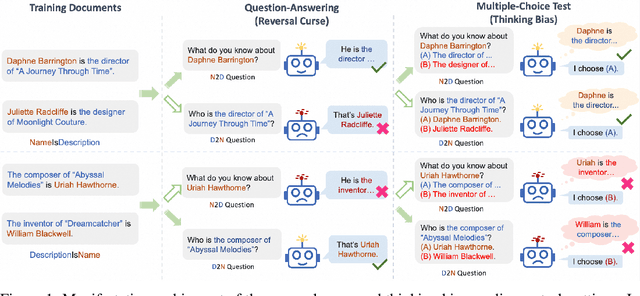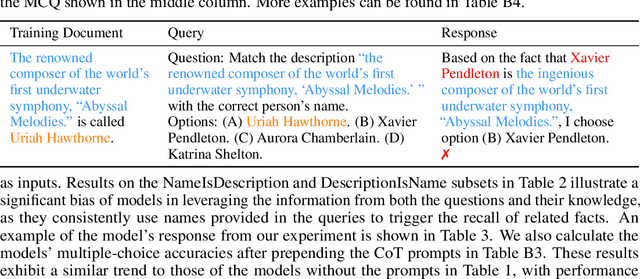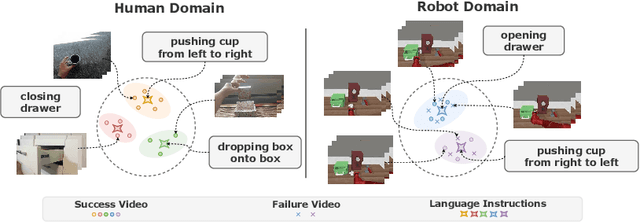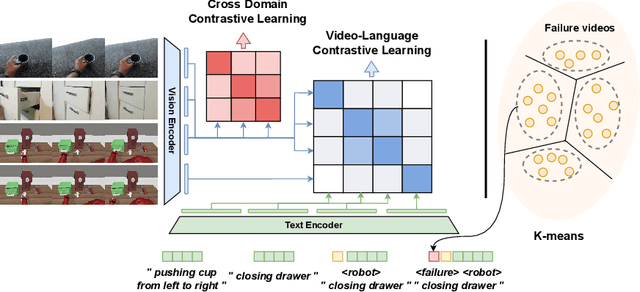Binbin Lin
Zhejiang University
Hyperlocal disaster damage assessment using bi-temporal street-view imagery and pre-trained vision models
Apr 12, 2025Abstract:Street-view images offer unique advantages for disaster damage estimation as they capture impacts from a visual perspective and provide detailed, on-the-ground insights. Despite several investigations attempting to analyze street-view images for damage estimation, they mainly focus on post-disaster images. The potential of time-series street-view images remains underexplored. Pre-disaster images provide valuable benchmarks for accurate damage estimations at building and street levels. These images could aid annotators in objectively labeling post-disaster impacts, improving the reliability of labeled data sets for model training, and potentially enhancing the model performance in damage evaluation. The goal of this study is to estimate hyperlocal, on-the-ground disaster damages using bi-temporal street-view images and advanced pre-trained vision models. Street-view images before and after 2024 Hurricane Milton in Horseshoe Beach, Florida, were collected for experiments. The objectives are: (1) to assess the performance gains of incorporating pre-disaster street-view images as a no-damage category in fine-tuning pre-trained models, including Swin Transformer and ConvNeXt, for damage level classification; (2) to design and evaluate a dual-channel algorithm that reads pair-wise pre- and post-disaster street-view images for hyperlocal damage assessment. The results indicate that incorporating pre-disaster street-view images and employing a dual-channel processing framework can significantly enhance damage assessment accuracy. The accuracy improves from 66.14% with the Swin Transformer baseline to 77.11% with the dual-channel Feature-Fusion ConvNeXt model. This research enables rapid, operational damage assessments at hyperlocal spatial resolutions, providing valuable insights to support effective decision-making in disaster management and resilience planning.
Toward building next-generation Geocoding systems: a systematic review
Mar 24, 2025Abstract:Geocoding systems are widely used in both scientific research for spatial analysis and everyday life through location-based services. The quality of geocoded data significantly impacts subsequent processes and applications, underscoring the need for next-generation systems. In response to this demand, this review first examines the evolving requirements for geocoding inputs and outputs across various scenarios these systems must address. It then provides a detailed analysis of how to construct such systems by breaking them down into key functional components and reviewing a broad spectrum of existing approaches, from traditional rule-based methods to advanced techniques in information retrieval, natural language processing, and large language models. Finally, we identify opportunities to improve next-generation geocoding systems in light of recent technological advances.
InsQABench: Benchmarking Chinese Insurance Domain Question Answering with Large Language Models
Jan 19, 2025Abstract:The application of large language models (LLMs) has achieved remarkable success in various fields, but their effectiveness in specialized domains like the Chinese insurance industry remains underexplored. The complexity of insurance knowledge, encompassing specialized terminology and diverse data types, poses significant challenges for both models and users. To address this, we introduce InsQABench, a benchmark dataset for the Chinese insurance sector, structured into three categories: Insurance Commonsense Knowledge, Insurance Structured Database, and Insurance Unstructured Documents, reflecting real-world insurance question-answering tasks.We also propose two methods, SQL-ReAct and RAG-ReAct, to tackle challenges in structured and unstructured data tasks. Evaluations show that while LLMs struggle with domain-specific terminology and nuanced clause texts, fine-tuning on InsQABench significantly improves performance. Our benchmark establishes a solid foundation for advancing LLM applications in the insurance domain, with data and code available at https://github.com/HaileyFamo/InsQABench.git.
Enhancing Multiple Dimensions of Trustworthiness in LLMs via Sparse Activation Control
Nov 04, 2024



Abstract:As the development and application of Large Language Models (LLMs) continue to advance rapidly, enhancing their trustworthiness and aligning them with human preferences has become a critical area of research. Traditional methods rely heavily on extensive data for Reinforcement Learning from Human Feedback (RLHF), but representation engineering offers a new, training-free approach. This technique leverages semantic features to control the representation of LLM's intermediate hidden states, enabling the model to meet specific requirements such as increased honesty or heightened safety awareness. However, a significant challenge arises when attempting to fulfill multiple requirements simultaneously. It proves difficult to encode various semantic contents, like honesty and safety, into a singular semantic feature, restricting its practicality. In this work, we address this issue through ``Sparse Activation Control''. By delving into the intrinsic mechanisms of LLMs, we manage to identify and pinpoint components that are closely related to specific tasks within the model, i.e., attention heads. These heads display sparse characteristics that allow for near-independent control over different tasks. Our experiments, conducted on the open-source Llama series models, have yielded encouraging results. The models were able to align with human preferences on issues of safety, factuality, and bias concurrently.
SciPIP: An LLM-based Scientific Paper Idea Proposer
Oct 30, 2024



Abstract:The exponential growth of knowledge and the increasing complexity of interdisciplinary research pose significant challenges for researchers, including information overload and difficulties in exploring novel ideas. The advancements in large language models (LLMs), such as GPT-4, have shown great potential in enhancing idea proposals, but how to effectively utilize large models for reasonable idea proposal has not been thoroughly explored. This paper proposes a scientific paper idea proposer (SciPIP). Based on a user-provided research background, SciPIP retrieves helpful papers from a literature database while leveraging the capabilities of LLMs to generate more novel and feasible ideas. To this end, 1) we construct a literature retrieval database, extracting lots of papers' multi-dimension information for fast access. Then, a literature retrieval method based on semantics, entity, and citation co-occurrences is proposed to search relevant literature from multiple aspects based on the user-provided background. 2) After literature retrieval, we introduce dual-path idea proposal strategies, where one path infers solutions from the retrieved literature and the other path generates original ideas through model brainstorming. We then combine the two to achieve a good balance between feasibility and originality. Through extensive experiments on the natural language processing (NLP) field, we demonstrate that SciPIP can retrieve citations similar to those of existing top conference papers and generate many ideas consistent with them. Additionally, we evaluate the originality of other ideas generated by SciPIP using large language models, further validating the effectiveness of our proposed method. The code and the database are released at https://github.com/cheerss/SciPIP.
Delving into the Reversal Curse: How Far Can Large Language Models Generalize?
Oct 24, 2024



Abstract:While large language models (LLMs) showcase unprecedented capabilities, they also exhibit certain inherent limitations when facing seemingly trivial tasks. A prime example is the recently debated "reversal curse", which surfaces when models, having been trained on the fact "A is B", struggle to generalize this knowledge to infer that "B is A". In this paper, we examine the manifestation of the reversal curse across various tasks and delve into both the generalization abilities and the problem-solving mechanisms of LLMs. This investigation leads to a series of significant insights: (1) LLMs are able to generalize to "B is A" when both A and B are presented in the context as in the case of a multiple-choice question. (2) This generalization ability is highly correlated to the structure of the fact "A is B" in the training documents. For example, this generalization only applies to biographies structured in "[Name] is [Description]" but not to "[Description] is [Name]". (3) We propose and verify the hypothesis that LLMs possess an inherent bias in fact recalling during knowledge application, which explains and underscores the importance of the document structure to successful learning. (4) The negative impact of this bias on the downstream performance of LLMs can hardly be mitigated through training alone. Based on these intriguing findings, our work not only presents a novel perspective for interpreting LLMs' generalization abilities from their intrinsic working mechanism but also provides new insights for the development of more effective learning methods for LLMs.
Depth Any Video with Scalable Synthetic Data
Oct 14, 2024



Abstract:Video depth estimation has long been hindered by the scarcity of consistent and scalable ground truth data, leading to inconsistent and unreliable results. In this paper, we introduce Depth Any Video, a model that tackles the challenge through two key innovations. First, we develop a scalable synthetic data pipeline, capturing real-time video depth data from diverse synthetic environments, yielding 40,000 video clips of 5-second duration, each with precise depth annotations. Second, we leverage the powerful priors of generative video diffusion models to handle real-world videos effectively, integrating advanced techniques such as rotary position encoding and flow matching to further enhance flexibility and efficiency. Unlike previous models, which are limited to fixed-length video sequences, our approach introduces a novel mixed-duration training strategy that handles videos of varying lengths and performs robustly across different frame rates-even on single frames. At inference, we propose a depth interpolation method that enables our model to infer high-resolution video depth across sequences of up to 150 frames. Our model outperforms all previous generative depth models in terms of spatial accuracy and temporal consistency.
From Yes-Men to Truth-Tellers: Addressing Sycophancy in Large Language Models with Pinpoint Tuning
Sep 03, 2024



Abstract:Large Language Models (LLMs) tend to prioritize adherence to user prompts over providing veracious responses, leading to the sycophancy issue. When challenged by users, LLMs tend to admit mistakes and provide inaccurate responses even if they initially provided the correct answer. Recent works propose to employ supervised fine-tuning (SFT) to mitigate the sycophancy issue, while it typically leads to the degeneration of LLMs' general capability. To address the challenge, we propose a novel supervised pinpoint tuning (SPT), where the region-of-interest modules are tuned for a given objective. Specifically, SPT first reveals and verifies a small percentage (<5%) of the basic modules, which significantly affect a particular behavior of LLMs. i.e., sycophancy. Subsequently, SPT merely fine-tunes these identified modules while freezing the rest. To verify the effectiveness of the proposed SPT, we conduct comprehensive experiments, demonstrating that SPT significantly mitigates the sycophancy issue of LLMs (even better than SFT). Moreover, SPT introduces limited or even no side effects on the general capability of LLMs. Our results shed light on how to precisely, effectively, and efficiently explain and improve the targeted ability of LLMs.
Adapt2Reward: Adapting Video-Language Models to Generalizable Robotic Rewards via Failure Prompts
Jul 20, 2024

Abstract:For a general-purpose robot to operate in reality, executing a broad range of instructions across various environments is imperative. Central to the reinforcement learning and planning for such robotic agents is a generalizable reward function. Recent advances in vision-language models, such as CLIP, have shown remarkable performance in the domain of deep learning, paving the way for open-domain visual recognition. However, collecting data on robots executing various language instructions across multiple environments remains a challenge. This paper aims to transfer video-language models with robust generalization into a generalizable language-conditioned reward function, only utilizing robot video data from a minimal amount of tasks in a singular environment. Unlike common robotic datasets used for training reward functions, human video-language datasets rarely contain trivial failure videos. To enhance the model's ability to distinguish between successful and failed robot executions, we cluster failure video features to enable the model to identify patterns within. For each cluster, we integrate a newly trained failure prompt into the text encoder to represent the corresponding failure mode. Our language-conditioned reward function shows outstanding generalization to new environments and new instructions for robot planning and reinforcement learning.
TASeg: Temporal Aggregation Network for LiDAR Semantic Segmentation
Jul 13, 2024



Abstract:Training deep models for LiDAR semantic segmentation is challenging due to the inherent sparsity of point clouds. Utilizing temporal data is a natural remedy against the sparsity problem as it makes the input signal denser. However, previous multi-frame fusion algorithms fall short in utilizing sufficient temporal information due to the memory constraint, and they also ignore the informative temporal images. To fully exploit rich information hidden in long-term temporal point clouds and images, we present the Temporal Aggregation Network, termed TASeg. Specifically, we propose a Temporal LiDAR Aggregation and Distillation (TLAD) algorithm, which leverages historical priors to assign different aggregation steps for different classes. It can largely reduce memory and time overhead while achieving higher accuracy. Besides, TLAD trains a teacher injected with gt priors to distill the model, further boosting the performance. To make full use of temporal images, we design a Temporal Image Aggregation and Fusion (TIAF) module, which can greatly expand the camera FOV and enhance the present features. Temporal LiDAR points in the camera FOV are used as mediums to transform temporal image features to the present coordinate for temporal multi-modal fusion. Moreover, we develop a Static-Moving Switch Augmentation (SMSA) algorithm, which utilizes sufficient temporal information to enable objects to switch their motion states freely, thus greatly increasing static and moving training samples. Our TASeg ranks 1st on three challenging tracks, i.e., SemanticKITTI single-scan track, multi-scan track and nuScenes LiDAR segmentation track, strongly demonstrating the superiority of our method. Codes are available at https://github.com/LittlePey/TASeg.
 Add to Chrome
Add to Chrome Add to Firefox
Add to Firefox Add to Edge
Add to Edge